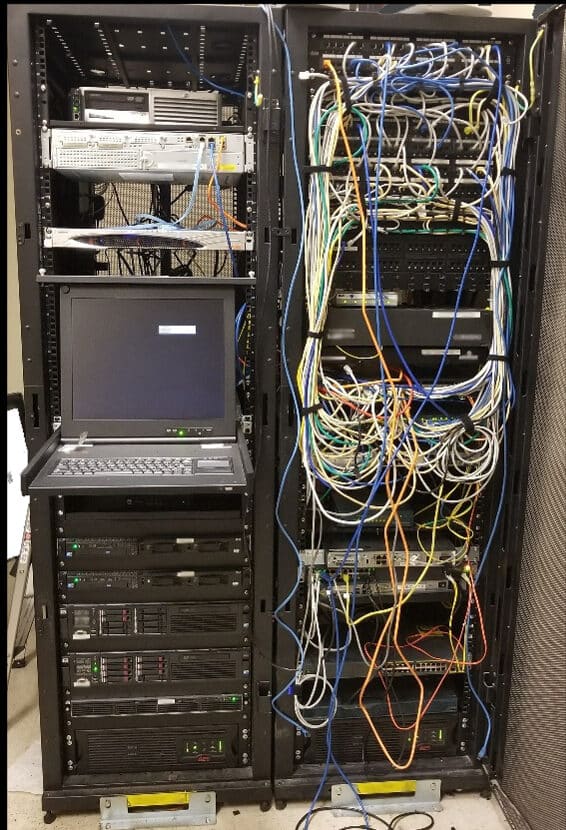In 2020 alone, there have been over 1,000 cybersecurity attacks, and these cases alone have affected over 155 million individuals. Financially, cybersecurity attacks have caused damage valuing over $400 billion worldwide. However, cybersecurity is still not taken seriously by the general public.
It seems the only times we hear about network security breaches in the media is when it involves a celebrity or a government facility. Network security is the most important topic we need to have at the forefront of our minds in this digital age.
Are you curious about how endpoint detection and response (EDR) can help? Keep reading to learn how EDR can keep your business and your client’s information safe.
Network Security vs. Endpoint Security
Even though we discuss endpoint detection and response in this article, we must start at the basics. Beginning with the difference between endpoint security and network security.
We want you to imagine someone walking a dog on a leash. The leash is the network security, and the dog at the end of the leash is the endpoint.
The owner must be proactive in ensuring no tears or rips in the leash are not present. This is to prevent the leash from breaking apart if the dog were to lunge. Similarly, any business owner must be proactive in monitoring the many moving parts of their network. This is an inevitable step to avoid any potential attacks.
Some of the moving parts include policy enforcement, encryption, endpoint security, and privacy, to name a few. With the rise in popularity of the Internet of Things (IoT), it’s becoming more crucial to consider endpoint security. This involves any device that connects to a network, whether it’s fixed or mobile.
The growing number of mobile devices used for personal and business purposes makes endpoint devices a high-value target for hackers.
So what’s included in the definition of an endpoint device? Virtually any device that antivirus software can be installed on can be considered an endpoint. This includes desktops, laptops, mobile phones, servers, and tablets.
Endpoint security is the measures taken to protect endpoints. In the example with the dog and the leash above, a step taken to prevent the leash from being torn is to train the dog to walk on a loose leash and not lunge. This brings us to the main topic of this article, endpoint detection, and response.
Endpoint Detection and Response (EDR). Simply put, endpoint detection and response is a security solution that consists of constant real-time monitoring and the collection of endpoint data. That data is collected and processed to establish threat patterns. The system then provides a proactive response such as removing or containing the threat and alerting the security team.
It’s a security system that provides a proactive response to suspicious activities on hosts and endpoints.
You’ll come across many tools and solutions when searching for EDR solutions on the market. But they’re not all created equal. Some focus on backend management, while others focus solely on analysis.
The Key Features to Watch For
When searching for an EDR solution for your enterprise, there are four elements to watch. The first key feature of an efficient EDR tool is filtering.
Many subpar EDR solutions are incapable of filtering out low-quality false positive threats. These false positives create something called alert fatigue.
Over 70% of security professionals have stated that they investigate over ten alerts on a day-to-day basis. The sheer volume of false alerts combined with a high number of daily cases makes it much easier for a real threat to bypass the system. This makes the EDR tool potentially redundant.
A good EDR tool will have excellent filtering capability to reduce the number of false positives.
Other Key Features
The next feature to look for is advanced threat blocking. This is where the automated part of an EDR solution comes into play. Advanced threat blocking prevents and neutralizes threats the moment they are detected.
When an EDR solution has a weak advanced threat-blocking feature, it makes it easier for the threat to push through the security measures in place.
Threat hunting is a practice that’s part of any incident response capability. It means that the system can proactively scour the network for any threats that are sitting there undetected. It goes deeper into a network to specifically hunt for threats that have made it past the other security measures from the endpoints.
The last feature to look for is multiple threat protection. Ransomware and malware are often the culprits when it comes to numerous threat breaches. This feature looks for multiple or advanced attacks that can overwhelm a system.
When a company finds the best EDR system for their enterprise, the benefits are undeniable. Take, for example, multiple threat protection from malware.
An EDR system with adequately functioning multiple threat protection features saves a company millions of dollars and lost time from potential malware attacks. In general, malware attacks cost companies a little over two million dollars and a little less than 60 days of lost time.
The consolidation benefit of an EDR system provides easy access to the security team to get as much information as possible. When all the features and data points are collected in one consolidated location, it allows for improved threat response.
What is EPP?
In 2019, a criminal network used the GozNym malware to steal more than $100 million from endpoint users. This malware comes from phishing emails sent to unknowing employees to users downloading from a shady website.
Endpoint security is more critical today than ever. When it comes to endpoint security, two categories lead the market – endpoint detection and response and endpoint protection platforms.
Let’s start with endpoint protection platforms (EPP). An EPP explicitly prevents breaches from malware, ransomware, and zero-day vulnerabilities. While EDR, as discussed, goes deeper into the system to detect and respond to threats that made it past the EPP and other security tools.
EDR vs. EPP
An EPP uses several methods to detect suspicious activity. It first looks for signatures from known malware.
The second method involves running files in a virtual environment. The EPP executes the file in a virtual environment before running to prevent any potential attacks.
Behavior analysis is also taken into consideration even when there are no threat signature readings. This means an EPP will have a baseline endpoint behavior and use that baseline to identify any anomalies.
If you’ve ever experienced a warning message stating that you don’t have access to a specific URL, the EPP procedure is likely taking place. This is because EPP can whitelist and blacklist certain URLs, applications, and specific IP addresses. This is important when there is a growing number of remote endpoint devices becoming IP-based.
As you can see, EDR and EPP have several overlaps, so many companies combine the two into one system. The overlap may make the EPP seem redundant, but the EPP’s benefits make it well worth it.
You can think of an EPP as the first layer of defense for network security. Sort of like an alarm system, it’s a passive form of threat prevention. Meaning it doesn’t require active supervision, unlike an EDR’s active detection.
A Better System
A more holistic approach to having both an EDR and an EPP may be necessary, depending on a company’s needs. However, which one should you choose if you had only one choice? Well, that depends.
This first line of defense is a good deterrent to many hackers. Generally, they prefer to attack easier targets, and if an EPP is in place, they’ll likely avoid attempting any further attacks to overcome an EPP. While an EPP doesn’t prevent any attacks, it may deter hackers from tapping into a network.
EDR on the other hand, provides the security team with the ability to respond to an attack. It can significantly reduce the amount of time required to identify an endpoint attack and contain them.
EDR and Network Security
Endpoint detection and response is a vital parts of an enterprise’s network security. With the rise of the once futuristic idea, the Internet of Things, EDR has become a hot topic for hackers, cybersecurity professionals, and businesses.
The cost-saving effects of having an EDR in place not only help the company’s bottom line but also help to protect the thousands if not millions of clients’ information from being leaked.
These days if a company doesn’t have top-notch network security, all confidence in the company is lost by consumers.
Get in touch with one of our specialists to discuss how we can help get your EDR up and running.
Network security is the most important topic we need to have at the forefront of our minds in this digital age.
Contact us to learn more about how Bridgehead IT can help you align your IT with your business objectives.


